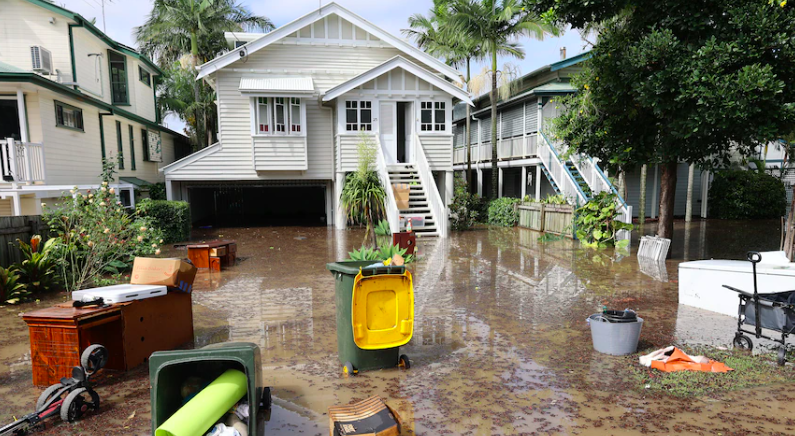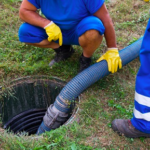Living in a flood-prone area can be a daunting experience, especially with climate change and unpredictable weather patterns increasing the risk of flooding. Whether you’re a long-time resident or new to a flood zone, it’s crucial to understand how to prepare for, respond to, and recover from potential flooding. Here are essential tips to help you navigate the challenges of living in an area at risk for flooding.
Understand Your Flood Risk
The first step in flood preparedness is understanding your specific flood risk. Familiarize yourself with local flood maps, which are typically available through your municipality or the Federal Emergency Management Agency (FEMA). These maps outline flood zones, indicating areas at risk for flooding during various severity levels. Knowing your risk will help you make informed decisions about property improvements, insurance, and emergency planning.
Invest in Flood Insurance
Standard homeowner’s insurance policies often do not cover flood damage. If you live in a flood-prone area, investing in flood insurance is essential. FEMA offers the National Flood Insurance Program (NFIP), which provides coverage for residential and commercial properties. Review your policy to understand what is covered and the necessary steps to file a claim in the event of flooding. Additionally, consider elevating your home or property if you’re in a high-risk area, as this can lead to lower premiums and better protection against flood damage.
Elevate Your Home and Utilities
Elevating your home is one of the most effective ways to protect against flood damage. If your property is in a flood-prone area, consider raising the structure to a height above the base flood elevation (BFE). This process can be complex and may require permits, but it can significantly reduce your risk of flooding.
In addition to elevating your home, ensure that utilities (such as electrical systems, HVAC, and plumbing) are also elevated to prevent damage. Installing sump pumps and backflow valves can further protect your home from water intrusion.
Create a Flood Emergency Plan
Having a comprehensive flood emergency plan is essential for all residents in flood-prone areas. Here’s how to develop an effective plan:
- Communication Plan: Establish a communication plan with your family and friends. Ensure everyone knows how to reach each other and where to meet if you become separated.
- Evacuation Routes: Identify the safest evacuation routes from your home to higher ground. Familiarize yourself with alternate routes in case primary roads are flooded.
- Emergency Kit: Prepare an emergency kit that includes essential items such as water, non-perishable food, medications, flashlights, batteries, and a first-aid kit. Don’t forget important documents like insurance papers, identification, and medical records.
- Stay Informed: Sign up for local weather alerts and emergency notifications. Consider downloading a weather app on your smartphone to stay updated on flood warnings and other critical information.
Landscape Wisely
Proper landscaping can help manage water runoff and reduce the risk of flooding around your home. Here are some landscaping tips:
- Create a Graded Slope: Ensure that the ground around your home slopes away from the foundation to divert water.
- Install Rain Gardens: Rain gardens can absorb excess water and reduce runoff, helping to mitigate flooding.
- Choose Native Plants: Native plants typically require less water and can thrive in wet conditions, aiding in flood management.
- Build Retaining Walls: If you live on a slope, consider building retaining walls to control water flow and protect your property from erosion.
Prepare for Evacuation
Despite your best preparations, floods can still occur with little warning. Being prepared for evacuation is vital. Here are the steps to take:
- Know When to Leave: Pay attention to flood warnings and advisories. Evacuate promptly if instructed by local authorities.
- Pack Your Essentials: When it’s time to evacuate, grab your emergency kit, important documents, and any necessary medications.
- Secure Your Home: If time permits, secure your home by moving valuables to higher ground, unplugging electronics, and shutting off utilities.
Recovery After the Flood
If you experience flooding, your focus should shift to recovery. Here are steps to help you rebuild:
- Assess Damage: After the floodwaters recede, assess the damage to your property and belongings. Document everything with photos for insurance purposes.
- Clean and Disinfect: Mold and mildew can begin to grow quickly in damp conditions. Clean and disinfect your home thoroughly to prevent health risks.
- Seek Assistance: Reach out to local disaster recovery organizations, such as the Red Cross, for assistance with food, shelter, and resources.
- Revisit Your Plan: After recovering from a flood, review your emergency plan and make necessary adjustments based on your experiences.
In Conclusion
Residing in a flood-prone area necessitates careful planning and vigilance. In Utah, it’s essential to recognize your flood risk, secure appropriate insurance coverage, develop an emergency plan, and implement effective stormwater management practices. By taking these steps, including smart landscaping techniques, you can greatly mitigate the effects of flooding on your home and community. Remember, being prepared is crucial for building resilience against rising waters. Stay informed, prioritize safety, and take proactive measures to safeguard your family and property from potential flooding.










